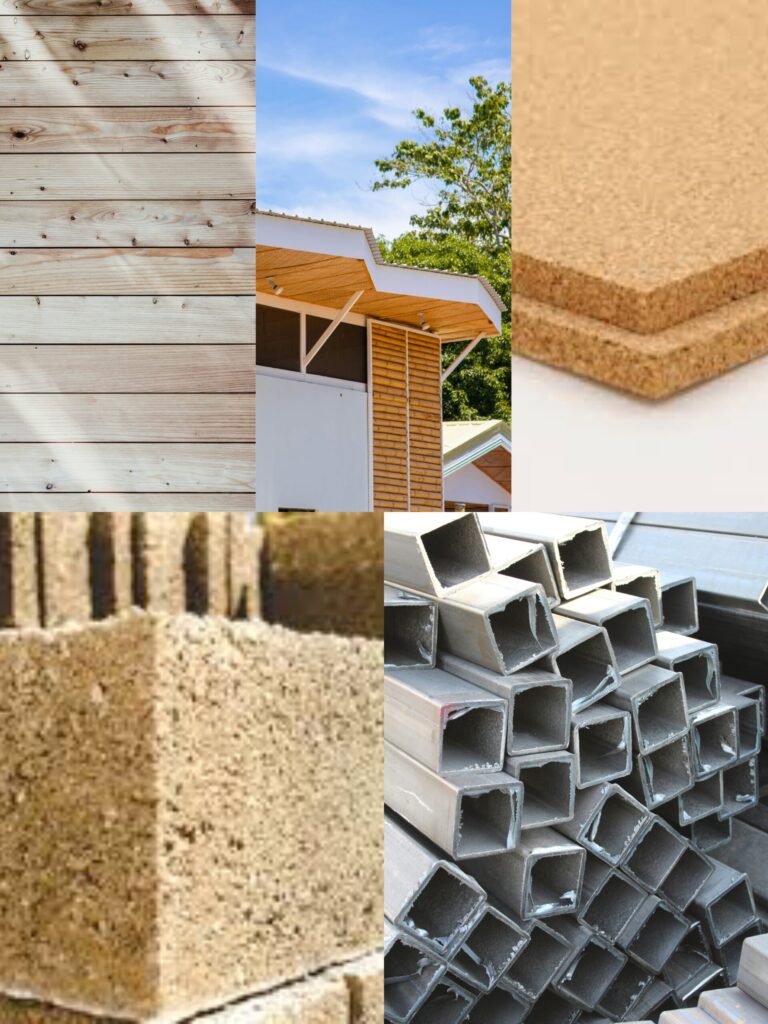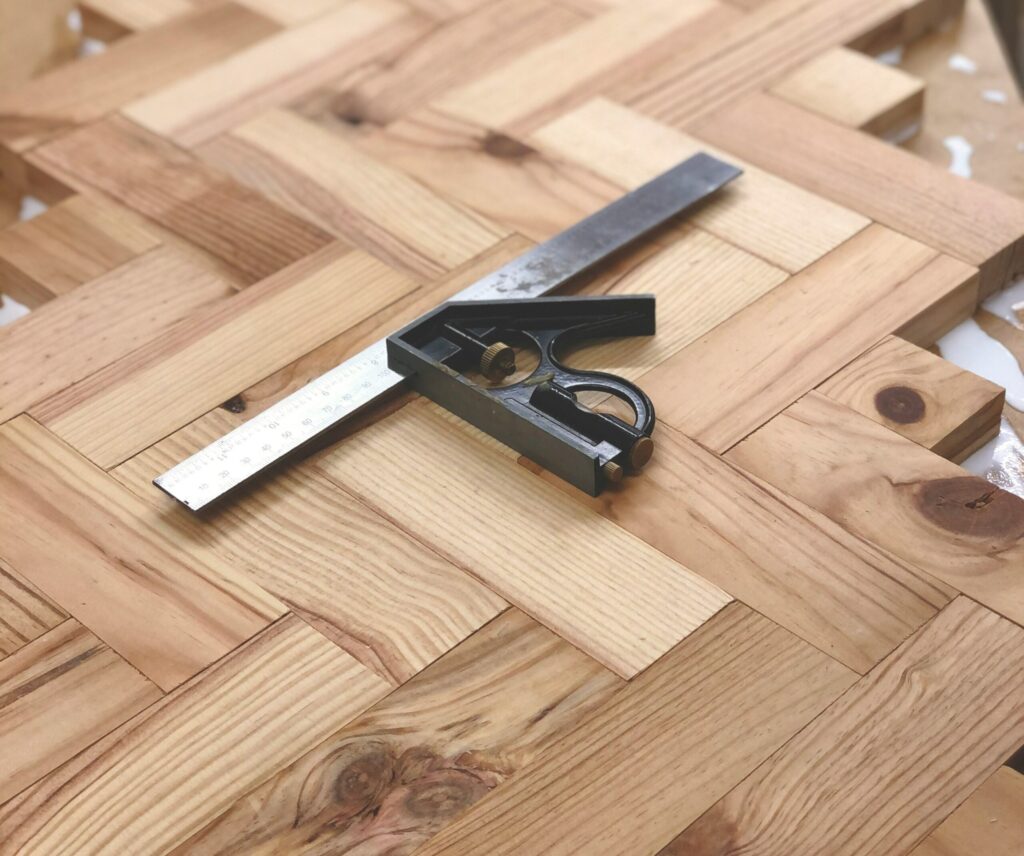Sustainable house materials aren’t just a buzzword—they’re a revolution in how we build our homes. A few years ago, I stood inside a house crafted from recycled shipping containers, its steel walls gleaming under the afternoon sun. The owner, a retired architect with a twinkle in his eye, boasted how it saved trees, cut waste, and still felt like a luxury loft. That moment flipped a switch in me: sustainable building isn’t a compromise—it’s a chance to rethink everything. With climate change knocking louder in 2025, choosing materials that heal rather than harm the planet isn’t optional—it’s urgent.
This isn’t your average green-living spiel. We’re diving deep into what makes a material sustainable, spotlighting game-changers like hempcrete and rammed earth, and sharing real-world insights from my own eco-journey. Whether you’re dreaming of a net-zero home or just swapping out a countertop, you’ll find actionable tips, surprising stats, and a fresh take on building better. Let’s get started.
What Makes a Material Sustainable?
Sustainable house materials are the unsung heroes of eco-friendly construction. They’re designed to shrink your environmental footprint without skimping on quality. But what sets them apart?
- Low Embodied Energy: Less energy burned in production and shipping—like bamboo, which grows fast and travels light.
- Renewable or Recycled: Think cork, harvested without killing the tree, or steel reborn from old cars.
- Non-Toxic: No off-gassing chemicals to ruin your indoor air.
- Longevity: Materials that stick around, reducing replacements and waste.
Why care? Buildings churn out 39% of global CO2 emissions, according to Architecture 2030. Swap concrete for hempcrete or lumber for reclaimed wood, and you’re slashing that number while building a home that lasts. It’s not just theory—my friend’s container home cut emissions by 60% compared to a traditional build, per a lifecycle analysis he proudly shared.
Top Sustainable House Materials to Know

Here’s the lineup of materials transforming homes in 2025. Each brings something unique—some save forests, others suck up carbon. Let’s break them down.
1. Reclaimed Wood
- What It Is: Timber salvaged from old barns, factories, or even whiskey barrels.
- Eco-Win: Keeps trees standing and landfills empty.
- Use It For: Flooring, beams, or a statement wall.
I’ve got a reclaimed oak shelf in my office—knotted, weathered, and full of soul. It’s tougher than new wood and tells a story no IKEA piece can match. Pair it with eco-friendly decor for a cohesive vibe.
2. Bamboo
- What It Is: A grass that grows like wildfire—up to 3 feet a day.
- Eco-Win: Renewable, carbon-sequestering, and stupidly strong.
- Use It For: Flooring, furniture, or structural beams.
Bamboo’s tensile strength beats steel, yet it’s light enough to handle easily. I’ve seen it shine in a friend’s beach house—polished floors that felt like walking on resilience.
3. Recycled Steel
- What It Is: Melted-down metal from scrapped cars or buildings.
- Eco-Win: Cuts mining waste and energy use by 75%, per the Steel Recycling Institute.
- Use It For: Framing, roofing, or siding.
That shipping container home? Its steel skeleton stood firm through storms, proving recycled doesn’t mean weak.
4. Hempcrete
- What It Is: Hemp fibers mixed with lime and water.
- Eco-Win: Carbon-negative—absorbs more CO2 than it emits.
- Use It For: Insulation or lightweight walls.
I touched a hempcrete wall once—rough, warm, and oddly comforting. It’s breathable, mold-resistant, and a quiet rebel against concrete’s dominance.
5. Cork
- What It Is: Bark stripped from cork oak trees, regrowing every 9 years.
- Eco-Win: Renewable, insulating, and naturally antimicrobial.
- Use It For: Flooring, wall tiles, or soundproofing.
Cork’s springy feel underfoot is addictive. I’ve used it in a home studio—quiet, cozy, and hypoallergenic.
6. Rammed Earth
- What It Is: Soil compacted into solid walls, sometimes with a dash of cement.
- Eco-Win: Local sourcing, massive thermal mass for natural heating/cooling.
- Use It For: Walls in arid climates.
I visited a rammed earth house in New Mexico—cool in summer, warm in winter, and built from the dirt beneath it. It felt ancient and futuristic at once.
7. Recycled Glass
- What It Is: Old bottles or windows melted into new forms.
- Eco-Win: Endless recyclability, zero landfill guilt.
- Use It For: Countertops, tiles, or decor.
A recycled glass countertop in my kitchen gleams teal and wipes clean effortlessly. It’s beauty with a conscience.
Material Comparison Table
| Material | Key Benefit | Cost (Per Sq Ft) | Durability |
|---|---|---|---|
| Reclaimed Wood | Saves trees | $5–$15 | High |
| Bamboo | Fast renewal | $4–$10 | High |
| Recycled Steel | Energy savings | $2–$8 | Very High |
| Hempcrete | Carbon-negative | $10–$20 | Moderate |
| Cork | Insulation | $3–$12 | Moderate |
| Rammed Earth | Thermal mass | $5–$15 | Very High |
| Recycled Glass | Recyclability | $20–$50 | High |
Costs vary by region and sourcing—check locally!
Why Choose Sustainable House Materials?

Switching to sustainable materials isn’t just a feel-good move—it’s a power play for your home and the planet. Here’s the payoff.
Planet-Friendly Perks
- Carbon Cuts: Hempcrete locks away 19 pounds of CO2 per cubic foot, says the American Hemp Council.
- Resource Rescue: Reclaimed wood skips deforestation; recycled steel spares ore pits.
- Waste Slash: Every ton of recycled glass saves 1.2 tons of raw materials.
Pocket-Friendly Payoffs
- Energy Savings: Cork or rammed earth insulates naturally, trimming bills.
- Longevity: Steel and bamboo outlast flimsy alternatives, dodging repair costs.
- Incentives: Green builds often snag tax credits—check your local regs.
Health Boosts
- Pure Air: Non-toxic materials like cork skip the VOCs (volatile organic compounds) that pollute indoors.
- Comfort: Rammed earth regulates humidity; hempcrete breathes easy.
- Vibes: Natural textures lift your mood—my cork floor feels like a daily hug.
That container home I saw? It wasn’t just sustainable—it was a sanctuary. The owner grinned, “It’s cheaper to heat, and I breathe better here.” Hard to argue with that.
The Challenges You’ll Face
Sustainable house materials aren’t perfect. Here’s the real talk.
1. Upfront Costs Sting
Bamboo flooring might hit $10 per square foot versus $3 for laminate. Hempcrete’s rare—expect a premium. But durability often balances the scales over time.
2. Supply Can Be Spotty
Reclaimed wood isn’t stacked at every Home Depot. Hempcrete suppliers are growing but scarce outside eco-hotspots. Shipping kills the vibe—go local or bust.
3. Skills Gap
Your contractor might blink at rammed earth or hempcrete. I once watched a builder fumble a cork install—training matters.
4. Style Trade-Offs
Love sleek minimalism? Reclaimed wood’s rustic scars might clash. Cork’s softness isn’t for everyone. It’s about what clicks for you.
The upside? Demand is driving costs down and skills up. In 2025, sustainable is shedding its “hippie” skin for mainstream muscle.
How to Bring Sustainable Materials Home

Ready to green your space? Here’s how to weave sustainable house materials into your life—new build or reno.
New Construction
- Dream Big, Plan Early: Sketch with an eco-savvy architect. My container-home pal mapped every inch before breaking ground.
- Focus on Impact: Insulate with hempcrete or frame with steel—big wins first.
- Source Smart: Local rammed earth beats shipped bamboo every time.
Renovation Hacks
- Baby Steps: Swap vinyl for cork flooring—easy and effective.
- Insulate Smarter: Sheep wool or recycled denim beats fiberglass. I stuffed denim into my attic—cozy and quiet.
- DIY Fun: Reclaimed wood shelves are a weekend win. Check zero-waste tips for more.
Infographic Idea: Top 5 Uses
- Flooring: Bamboo or cork for warmth.
- Walls: Hempcrete or rammed earth for strength.
- Framing: Recycled steel for bones.
- Insulation: Cork or wool for efficiency.
- Accents: Glass tiles or wood beams for flair.
Imagine this as a colorful chart—visualize your green home!
Fresh Perspectives: Beyond the Basics
Sustainable house materials aren’t static—they’re evolving. In 2025, I’m seeing hybrid innovations: bamboo-steel composites for skyscrapers, 3D-printed hempcrete blocks for speed. My neighbor’s experimenting with mycelium—mushroom roots—as insulation. It’s wild, lightweight, and compostable. The future’s not just green—it’s weirdly cool.
Personal twist: I’m plotting a micro-build with rammed earth and glass. Dirt from my yard, bottles from my recycling bin. It’s scrappy, imperfect, and mine. Sustainable isn’t pristine—it’s personal.
Conclusion
Sustainable house materials are your ticket to a home that’s tough, thrifty, and kind to Earth. From bamboo’s rapid regrowth to hempcrete’s carbon tricks, these options prove green living isn’t a sacrifice—it’s an upgrade. Sure, costs and quirks challenge us, but the wins stack higher: cleaner air, lower bills, and a legacy that doesn’t choke the planet.
What’s your sustainable move? Drop a comment—share your dream material or a project you’ve tackled. Hungry for more? Explore our eco-home guide. Let’s build a greener 2025, one brick (or hemp block) at a time.
FAQ
What’s the most sustainable building material?
No one-size-fits-all, but bamboo’s speed and hempcrete’s carbon-negative edge lead the pack. Your climate and goals decide.
Are sustainable materials pricier?
Upfront, sometimes—cork beats vinyl by a few bucks. Long-term? They save on energy and repairs.
Can any climate handle these materials?
Mostly, yes. Rammed earth thrives in deserts; cork loves humidity. Match material to weather.
Where do I source sustainable materials?
Hit salvage yards, green suppliers, or online hubs like EcoBuilding Store. Local’s best—ask around!
Affiliate Products
- Bamboo Flooring: Sleek, strong, sustainable. Shop Now
- Reclaimed Wood Kit: Rustic charm, zero waste. Shop Now
- Cork Panels: Warmth and quiet, naturally. Shop Now

